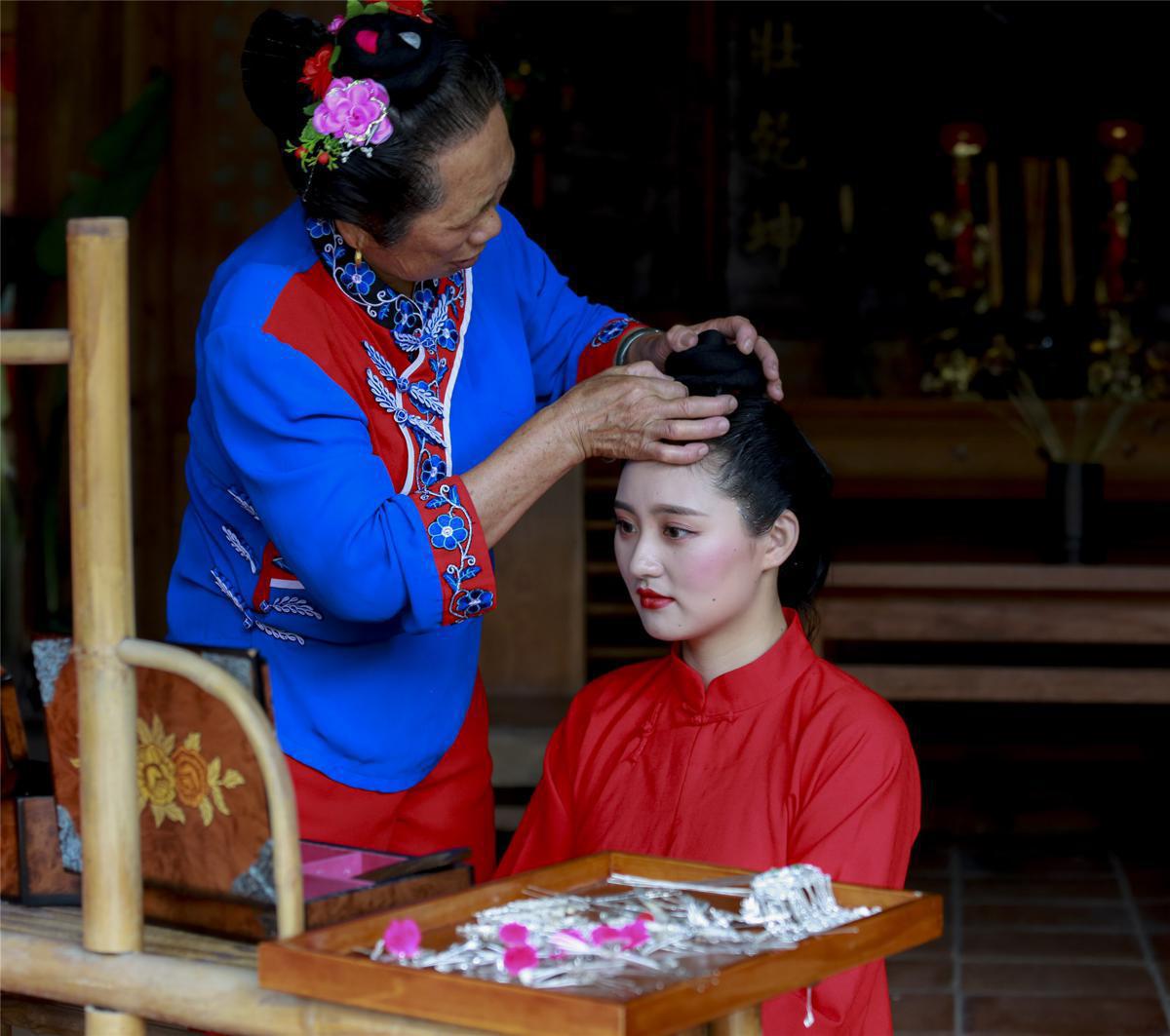The symbolism behind Meizhou's Mazu chignon headdress


The traditional attire and headdress of the women of Meizhou Island in Putian, Fujian province, is a provincial intangible cultural heritage.
According to legend, the unique ensemble of the fishing women in Meizhou was designed by the sea goddess Mazu (Lin Mo). By adorning themselves with the Mazu headdress and attire, the women of Meizhou pay homage to Mazu, seeking her blessings for safety and happiness.
The intricate headdress, often referred to as the Mazu chignon or sailboat-shaped headdress, is meticulously crafted using real hair and symbolizes various elements of a ship.
The circular bun atop the head represents the ship's rudder, while the red headband within signifies the mooring rope. A silver hairpin horizontally piercing the bun symbolizes the anchor, and the flattened sail-shaped chignon at the back of the head represents the sail. Adorning the sides of the sail chignon are wave-shaped hairpins, symbolizing oars.
Complementing the headdress is the Mazu attire. Its upper garment is a traditional Chinese-style indigo cross-collar top, while the lower garment consists of wide-legged trousers in a combination of red and black, with indigo as the primary color representing the sea, and red and black as secondary colors signifying auspiciousness and remembrance, respectively.




